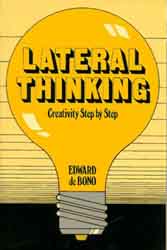Browse by Tag
- "Real" Innovation (2)
- Alignment (6)
- Business Innovation (9)
- Business Plan (2)
- Business Plans (1)
- Creativity (24)
- Critical Success Factors (4)
- Entrepreneurship (9)
- Global Competiveness (4)
- Human Side (11)
- India (1)
- Innovation (4)
- Innovation Consulting (18)
- Innovation Killers (3)
- Innovation Management (18)
- Innovation Tools (17)
- Innovation Training (24)
- Innovations (7)
- Inventions (16)
- IT Innovation (1)
- Leaders (5)
- Leadership (20)
- Leadership Development (13)
- Organizational Leadership (2)
- Organizational Strategy (20)
- Personal Values (6)
- Prediction (5)
- Strategic Innovation (38)
- strategic planning process (4)
- Strategy (3)
- Training (1)
- Vision (5)
- Weekly Dose (8)
Posts by Month
- 2014
- 2013
- 2012
- 2011
- 2010
- 2009
- 2008
- 2006
Innovation Inspiration From Nonprofits
7 Lessons From Innovative Nonprofit Campaigns
Nonprofit groups are experts at doing more with less, and that holds important lessons for corporate innovators. Groups such as GiveWell, DonorChoose.org and Charity: Water use innovative technologies, business models and marketing techniques to further their causes and spur supporters to action.
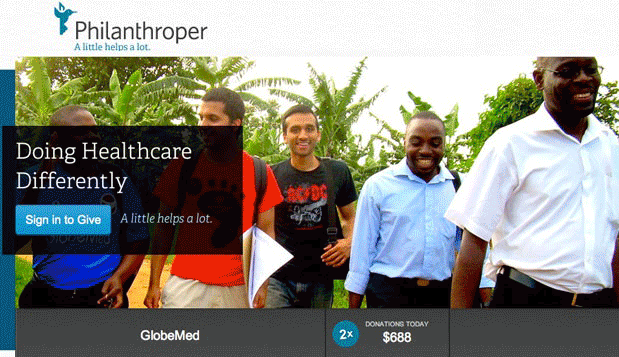
- Think small and simple when it comes to transmitting payments.
- Make your site fun, and think about using gamification to boost customer interaction.
- Crowd-sourcing funding can be an effective way to pay for a project.
- Video may very well be the future of the Web. Learn how to produce it, and you will be able to reach more people more effectively.
- Texting isn't just a way to chat with a friend they can be used in a variety of ways within your organization
- Know where your money goes and how it is spent.
- When your firm's offering isn't all that different from your competitors, attracting top-tier influencers to leverage your brand image can make all the difference.
Source: Inc.com
Best Steve Jobs Quotes
Our first family business was selling computers with a retail front in Farmington, CT. My father and I bought a franchise called MicroAge(like Computerland). PCs were considered the commerce king and Apple was considered to be the hobby machine or for kids.
It took two decades to upturn that myth…in a way no one expected.
Today, Mr. Jobs has played a leadership role not just at Apple, but for just about everyone who has contributed to or participated in today’s connected economy. It’s not that he was smarter or more clever than many others. What he is very good at is always to bring out the best in some really talented people.
Best wishes to you Mr. Jobs and your family. Here are some of the best quotes below.
-------------------------------------------------------------
On Technology
“It takes these very simple-minded instructions—‘Go fetch a number, add it to this number, put the result there, perceive if it’s greater than this other number’––but executes them at a rate of, let’s say, 1,000,000 per second. At 1,000,000 per second, the results appear to be magic.” [Playboy, Feb. 1, 1985]
******
“The problem is I’m older now, I’m 40 years old, and this stuff doesn’t change the world. It really doesn’t.
“I’m sorry, it’s true. Having children really changes your view on these things. We’re born, we live for a brief instant, and we die. It’s been happening for a long time. Technology is not changing it much — if at all.
“These technologies can make life easier, can let us touch people we might not otherwise. You may have a child with a birth defect and be able to get in touch with other parents and support groups, get medical information, the latest experimental drugs. These things can profoundly influence life. I’m not downplaying that.
“But it’s a disservice to constantly put things in this radical new light — that it’s going to change everything. Things don’t have to change the world to be important.” [Wired, February 1996]
******
“I think it’s brought the world a lot closer together, and will continue to do that. There are downsides to everything; there are unintended consequences to everything. The most corrosive piece of technology that I’ve ever seen is called television — but then, again, television, at its best, is magnificent.” [Rolling Stone, Dec. 3, 2003]
On Design
“We think the Mac will sell zillions, but we didn’t build the Mac for anybody else. We built it for ourselves. We were the group of people who were going to judge whether it was great or not. We weren’t going to go out and do market research. We just wanted to build the best thing we could build.
When you’re a carpenter making a beautiful chest of drawers, you’re not going to use a piece of plywood on the back, even though it faces the wall and nobody will ever see it. You’ll know it’s there, so you’re going to use a beautiful piece of wood on the back. For you to sleep well at night, the aesthetic, the quality, has to be carried all the way through.” [Playboy, Feb. 1, 1985]
******
“Design is a funny word. Some people think design means how it looks. But of course, if you dig deeper, it’s really how it works. The design of the Mac wasn’t what it looked like, although that was part of it. Primarily, it was how it worked. To design something really well, you have to get it. You have to really grok what it’s all about. It takes a passionate commitment to really thoroughly understand something, chew it up, not just quickly swallow it. Most people don’t take the time to do that.
“Creativity is just connecting things. When you ask creative people how they did something, they feel a little guilty because they didn’t really do it, they just saw something. It seemed obvious to them after a while. That’s because they were able to connect experiences they’ve had and synthesize new things. And the reason they were able to do that was that they’ve had more experiences or they have thought more about their experiences than other people.
“Unfortunately, that’s too rare a commodity. A lot of people in our industry haven’t had very diverse experiences. So they don’t have enough dots to connect, and they end up with very linear solutions without a broad perspective on the problem. The broader one’s understanding of the human experience, the better design we will have. [Wired, February 1996]
******
“For something this complicated, it’s really hard to design products by focus groups. A lot of times, people don’t know what they want until you show it to them.”
“That’s been one of my mantras — focus and simplicity. Simple can be harder than complex: You have to work hard to get your thinking clean to make it simple. But it’s worth it in the end because once you get there, you can move mountains.” [BusinessWeek, May 25, 1998, in a profile that also included the following gem: "Steve clearly has done an incredible job," says former Apple Chief Financial Officer Joseph Graziano. "But the $64,000 question is: Will Apple ever resume growth?"]
******
“This is what customers pay us for–to sweat all these details so it’s easy and pleasant for them to use our computers. We’re supposed to be really good at this. That doesn’t mean we don’t listen to customers, but it’s hard for them to tell you what they want when they’ve never seen anything remotely like it. Take desktop video editing. I never got one request from someone who wanted to edit movies on his computer. Yet now that people see it, they say, ‘Oh my God, that’s great!’” [Fortune, January 24 2000]
******
“Look at the design of a lot of consumer products — they’re really complicated surfaces. We tried to make something much more holistic and simple. When you first start off trying to solve a problem, the first solutions you come up with are very complex, and most people stop there. But if you keep going, and live with the problem and peel more layers of the onion off, you can often times arrive at some very elegant and simple solutions. Most people just don’t put in the time or energy to get there. We believe that customers are smart, and want objects which are well thought through.” [MSNBC and Newsweek interview, Oct. 14, 2006]
On His Products
“I don’t think I’ve ever worked so hard on something, but working on Macintosh was the neatest experience of my life. Almost everyone who worked on it will say that. None of us wanted to release it at the end. It was as though we knew that once it was out of our hands, it wouldn’t be ours anymore. When we finally presented it at the shareholders’ meeting, everyone in the auditorium gave it a five-minute ovation. What was incredible to me was that I could see the Mac team in the first few rows. It was as though none of us could believe we’d actually finished it. Everyone started crying.” [Playboy, Feb. 1, 1985]
******
“We made the buttons on the screen look so good you’ll want to lick them.” [On Mac OS X, Fortune, Jan. 24, 2000]
******
“It will go down in history as a turning point for the music industry. This is landmark stuff. I can’t overestimate it!” [On the iTunes Music Store, Fortune, May 12, 2003]
On Business
“You know, my main reaction to this money thing is that it’s humorous, all the attention to it, because it’s hardly the most insightful or valuable thing that’s happened to me.” [Playboy, Feb. 1, 1985]
******
“Being the richest man in the cemetery doesn’t matter to me … Going to bed at night saying we’ve done something wonderful… that’s what matters to me.” [The Wall Street Journal, May 25, 1993]
******
“Innovation has nothing to do with how many R&D dollars you have. When Apple came up with the Mac, IBM was spending at least 100 times more on R&D. It’s not about money. It’s about the people you have, how you’re led, and how much you get it.” [Fortune, Nov. 9, 1998]
******
“The cure for Apple is not cost-cutting. The cure for Apple is to innovate its way out of its current predicament.” [Apple Confidential: The Real Story of Apple Computer Inc., May 1999]
On System and Process
The system is that there is no system. That doesn’t mean we don’t have process. Apple is a very disciplined company, and we have great processes. But that’s not what it’s about. Process makes you more efficient.
“But innovation comes from people meeting up in the hallways or calling each other at 10:30 at night with a new idea, or because they realized something that shoots holes in how we’ve been thinking about a problem. It’s ad hoc meetings of six people called by someone who thinks he has figured out the coolest new thing ever and who wants to know what other people think of his idea.
“And it comes from saying no to 1,000 things to make sure we don’t get on the wrong track or try to do too much. We’re always thinking about new markets we could enter, but it’s only by saying no that you can concentrate on the things that are really important. [BusinessWeek, Oct. 12, 2004]
Read more at: http://blogs.wsj.com/digits/2011/08/24/steve-jobss-best-quotes/
Being Open to Creativity and New Possibilities
Why doesn’t innovation and right-brain thinking is not welcomed in the work world?
Because we don’t promote and do not understand that we must know that we don't know all that we need to know. Therefore, why would you ever want to say no to something that will show you the way to grow.
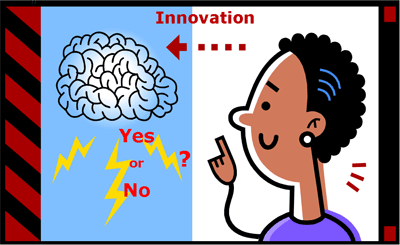
In other words, experiment, persist, don't give up, and learn to fail fast. And when down on your knees, you will now know what works and what doesn’t work to move forward.
Life is too short to being relegated to the world of 'no'.
Be home at ‘yes’. Be a visitor at the home of ‘no’.
Old Clothing Glued Together, To Form Mega-Stylish Chairs
And they’re actually sturdy!
Far too many people toss their outdated clothes or, worse, send them to Salvation Army assuming, wrongly, that someone else wants to snatch up a pair of 1987 Z. Cavariccis. Tobias Juretzek ain't one of them. He takes his old shirts, jeans, and other garments and turns them into something actually useful: furniture.
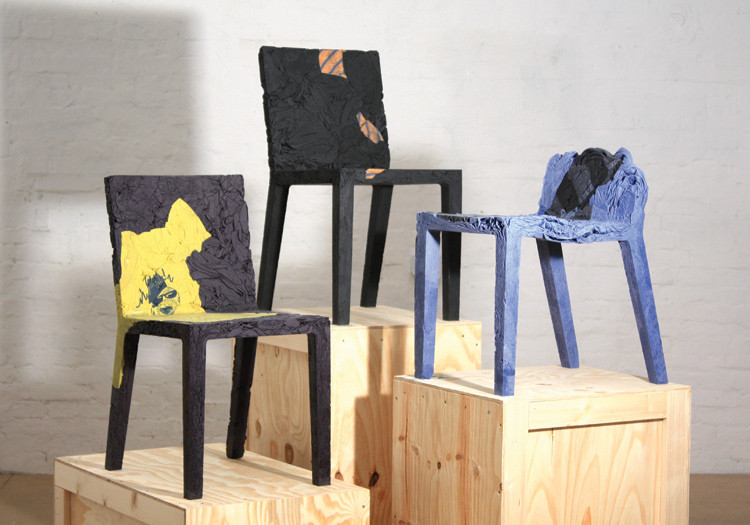
Juretzek, a German designer, throws together disused clothes to create stylish little chairs that could almost pass for something you'd find around the dining-room table, if not for the occasional exposed zipper (ouch!).
Source: Fast Co.Design
How to Innovate in 1 hour a week
How great business innovators are made (not born)
The key to being more innovative is to fence off an hour a week to simply sit and think, says creativity consultant Todd Henry. Setting aside a regular time for reflection lets executives see connections they might miss while they're trying to get work done. "This is not time to do work. This is time to think about work," Henry says.
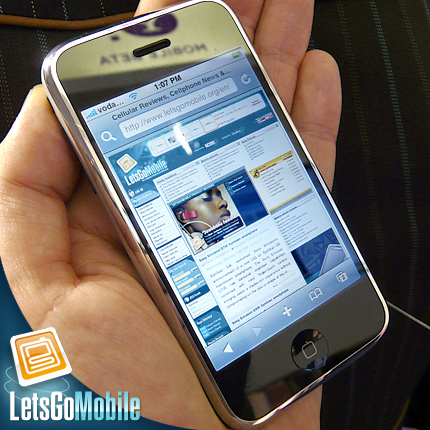
Not long ago, creativity guru Todd Henry recommended to one of his consulting clients, a high-ranking manager, that he set aside one hour a week to generate new ideas -- "one hour, predictably scheduled, no exceptions and no violations," Henry says in his book, The Accidental Creative: How to Be Brilliant at a Moment's Notice. "This is not time to do work. This is time to think about work."
That executive's reaction, Henry recalls: "He fired back at me, 'What?! You just want me to sit around and think?!" Read more...
Source: Fortune - Anne Fisher
Six Designs For Houses That Cost Just $300 To Build
300 House
Shelter is one of humanity's most basic needs. But a house is a luxury beyond the wildest dreams of most people in the developed world--leading to dangerous and unsanitary shantytowns, which compound the problems of poverty and disease. The $300 House Project, for which designers were asked to figure out a way to construct a simple house for $300 or less, aimed to solve this problem, by creating cheap and simple to build houses that could be built on a massive scale. The winners--judged by luminaries like Yves Behar and Umair Haque--were recently announced.
300 House Origins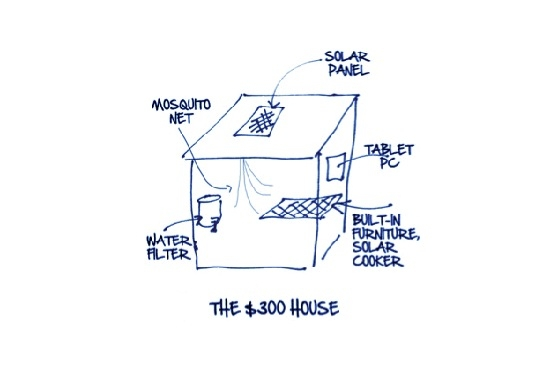
The idea started with this simple napkin drawing of what a $300 house could look like (though wall-mounted tablet computers were unrealistic) and a challenge offered in a series of posts at the Harvard Business Review by Vijay Govindarajan and Christian Sarkar. The contest itself garnered 300 submissions and resulted in six winners, which will take the next step of actually prototyping their designs.
DVS
In its design, DVS envisions a simple house made of compressed earth blocks and a wooden frame. A corrugated metal roof is raised slightly from the house to provide air flow. What's more interesting than just the design for one $300 house is DVS' plan to build the houses together in compounds with a central courtyard, which is where activities like cooking and washing would take place.
ArchitectureCommons

The main focus of ArchitectureCommons's plan is not just a house, but a new economic system. By creating local cooperatives that make earthen bricks, AC believes the entire structure of the house could be manufactured for free. Maybe a sneaky way around the rules, but also a potentially game-changing innovation for poor communities in need of housing and industry.
Elsap11
The design of Elsap11's house involves a concrete base, and cardboard tubes impregnated with tar. A raised roof keeps away the elements but also allows for ventilation.
iLines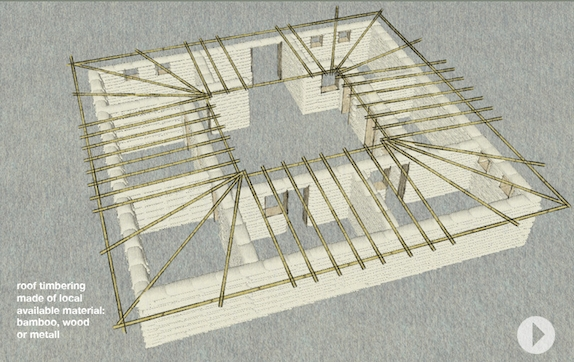
iLines envisions a series of houses centered around a central courtyard. Its design also uses earth-filled bags, supported by wood or bamboo. The roof can either be made of bags filled with a light-weight material or, in wetter climates, a combination of cardboard and scrap metal
PSouter
PStouters' design features a base made of bags of dirt (easily obtainable), topped with rows mesh cylinders filled with clay. The desin allows for the simple addition of extra sleeping areas or of a cooking porch, to keep cooking smoke outside the main house. For different climates, it can be insulated or have windows added for little extra cost.
Rogerio AA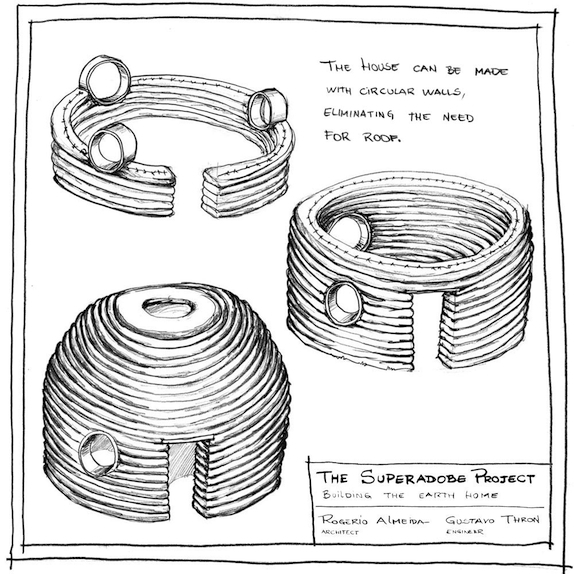
Instead of filling bags with dirt, Rogerio Almeida's SuperAdobe project involves filling plastic tubing. The tubes can then be laid down to create the walls of a building. They can even be wrapped around in concentric circles to create a beehive effect, eliminating the need for a roof.
Beyond Gravity #2
Here is another installment of what has been traveling through my desk. In the last Beyond Gravity #1 we looked at innovation examples related to design, a book, a Harvard Conference I went to, and much more. I hope you enjoy some of the mind-benders listed below. Feel free to send me your comments and enjoy!
- Technology: 3D Models created by Cell Phones (Microsoft): Click here
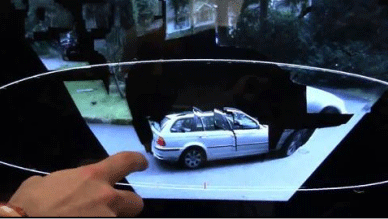
- Does God Exist?: Earth is smaller than an atom…the Human mind is insignificant…or is it? NASA’s March 7th photo of the Sun is amazing. You may want to put it as a favorite site! Click here

- Big Thinking: If you understand Darwin’s Forgotten Theories you can discover solutions to just about every challenge in your personal and professional life… Click here
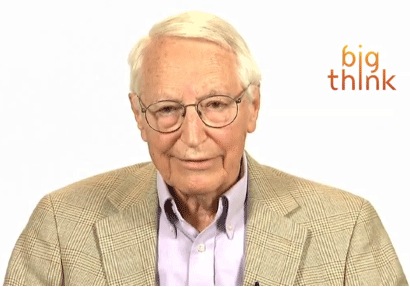
- How to Fail Fast: Want to solve impossible problems faster? Learn to re-think your original problem itself.
 In most cases, the problem that seems impossible is not the problem you need to solve. Click here
In most cases, the problem that seems impossible is not the problem you need to solve. Click here
- Green Innovation: PepsiCo unveils 100% Plant based bottle: Click here
- Product: Home in a Car by Swiss Room Box… Click here
- Steelcase's Brilliant Workstation For Staging Virtual Meetings [Video] Click here
"Beyond Gravity" (#1)
Following is a list of videos, blog posts and articles on going beyond “personal and organizational gravity”. Gravity is an invisible force holding us back when it comes to growth and innovation. We must go beyond that. Following are some items that I have enjoyed in the last couple of weeks and the latest posts at www.desai.com. I hope you enjoy them.
1) Design: Very nice example of extraordinary furniture for small space.
2) Book: “Lateral Thinking” by Edward DeBono. Very nice and very popular. Worth having a copy if you are serious about facilitating workshops on creativity and team synergy.
3) Conference: Harvard Conference on India: - some great speakers, nice content, and one of our client company’s Chairman attending (Murugappa Group, Chennai, India).
4) Hong-Kong: 330 Square feet Flat/Apartment transforms into 24 different eco-friendly rooms.
5) Free McKinsey Report: The urban world is shifting. Today only 600 urban centers generate about 60 percent of global GDP. While 600 cities will continue to account for the same share of global GDP in 2025, this group of 600 will have a very different membership. Over the next 15 years, the center of gravity of the urban world will move south and, even more decisively, east.
6) Rural India: Rural communities create more innovations then you think.
7) Personal Branding: Dan Schawbel is pretty good at marketing himself; as a brand. Do you want to become ‘the’ brand for your chosen area of expertise? Why not?. Here is what Dan has done…check his work at DanSchawbel.com and take a look at his community on Personal Branding Blog.
How are Innovation, Creativity, Engagement, Personal and Human Values linked?
1) Innovation arises from creativity.
2) Creativity is shaped by individual's engagement.
3) Engagement and commitment to one's work is directly linked to clarity of Personal Values and the Organizational Values of an institution one works for.
Personal Values are molded based on one's Spiritual Integrity (alignment of thoughts, words, and actions). Spiritual Integrity is the expression of one's deep self-awareness of their inherent Human Values within. Human Values are the same in all human beings. One's ability to unearth the Human Values distinguishes one's moral compass vs. that of another - sometime called Character.

Therefore, if an organization wants to create a climate and culture innovation, best possible lasting solution is to help every employee and leader become more self-aware of who they are and what their personal values are. And I don't mean definition of personal values but the expression of those values; i.e. how do those values show up in their work? Their projects? Their email communications, etc.? This will allow everyone to 'tap into' the inner source where ideas to grow the business are sitting dormant.
Great Innovation Leaders figured this out long time ago - i.e. innovation arises from one's (or team's)deep passion for something much bigger then themselves.
-Jatin
Forget "Creativity",embrace "Creativeness" A strategy for the future!
Today's managers and leaders think of "creativity" rather than"creativeness". Our corporate culture has trained us to immediately think of results rather than seeking to be the kind of people who achieve them, which is little like putting the cart before the horse. We, too often, look for something which can be measured and therefore controlled. We use the word "Creativity" with the underlying intent that it can be a measurable quantity, whereas creativeness is not. It is a quality of the person.
Creativeness is something entirely natural, like the budding of a plant from a seed. Because it is natural, it cannot be forced to produce, commanded or demanded.
There are no recipes for creativeness. It happens in one's presence at the spur of a moment.
For organizations to compete for the critical "talent war" ahead of us, they must rethink cultivating creativity, but more importantly creating an environment for people to naturally bring out their latent creativeness -which exists in all human beings. Organizations who figure out how to do that will be able to attract and retain the best talent.
So how can one develop this competency of "creativeness" in day-to-day work?
Develop greater awareness of situations and problems, viewing them with bare attention. In this way they will be seen with clarity.
- Look at situations with sincerity and detachment (very hard to do). This means recognizing and admitting to yourself your own involvement.
- When you have observed the problem in this way, do not put it on one side, but bear it in mind for however long is necessary. Don't force to seek the solution- let it come to you.
- Take care to notice the intuitive signals, whatever these happen to be in your case. Eventually a solution will occur to you - anytime, anywhere.
- Look at the solution you have discovered with clear comprehension of purpose and suitability. Not all intuitive and creative ideas you get are necessarily right or practical.
- Validate its value if it was realized, shop it around, lens it from varieties of perspectives - customers, peers, leaders, suppliers, markets, etc.
- Finally, act on it. Ideas and solutions are of no use, if they are only confined to private realities.
Thanks,
-Jatin
Recommended books on creativity (accessible online):
- Handbook of creativity - Robert J. Sternberg
- Cracking Creativity: The secrets of Creative Genius - Michael Michalko
- Creativity: Unleashing the forces within - Osho


